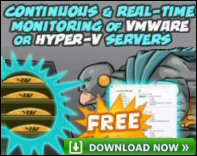Palladium – Windows Server 2008’s Security System
In a nutshell, Palladium combines hardware and software for better security. Palladium is actually a code name for Generation Secure Computing Base (NGSCB). The idea is a secure run-time environment for Windows allows software applications and services to protect the end user from privacy invasion, outside hacking, and spam.
Palladium requires special hardware security chips and microprocessors. While Palladium-based PCs will still operate normally, with legacy operating systems new Palladium applications and services will offer the new security features.
If you’re familiar with the .NET model, Palladium will institute a similar model for PC software, where a trusted mode is used for Palladium applications and services, while "un-trusted" mode is used for legacy code.
Microsoft designed Palladium with the following goals:
- Palladium will identify who you are dealing with online, and tell you what they’re doing. It can limit what arrives, and control what runs on your machine. Any information that comes in from the Internet will be verified before you access it, thus preventing damage.
- Encryption protects information using encryption so that hackers go elsewhere. The system can maintain document integrity so that documents can’t be altered without your knowledge.
- Palladium controls information that you send out from your computer. Using Digital Rights Management (DRM) technology, Palladium can securely distribute music, movies over the Internet. The recording industry could use this technology to let their customers exercise their fair use rights to copy audio CDs and movies, for example.
Guy Recommends : SolarWinds’ Free VM Monitor
The best feature of this new this new version of SolarWinds VM Monitor is that it checks Windows Hyper-V. Naturally, it still works with virtual machines on VMware ESX Servers. VM Monitor is a clever desktop tool that not only tests that your server is online, but also displays the CPU and memory utilization for each node.
It’s easy to install and to configure this virtual machine monitor, all you need the host server’s IP address or hostname and the logon info. Give this virtual machine monitor a try – it’s free.
Download your free copy of SolarWinds VM Monitor.
RemoteFX in Windows Server 2008 SP1
If you have used Remote Desktop then you will have been disappointed with the graphics experience compared with running Windows 7 locally. SP1 introduces an updated client to supply RDP (Remote Desktop Protocol) connections with RemoteFX.
With Windows 7 SP1, RemoteFX improves the Remote Desktop experience by supporting Windows Aero, full-motion video, and 3D graphics. To reap these benefits make sure the Windows 2008 Server has a DirectX 10.0 graphics card to support the Windows 7 SP1 guest operating system.
Incidentally, this technology has undergone more re-naming than any other Windows component, what used to be called Terminal Services is now Session Virtualization.
See a Review of Windows Server 2008 SP1
If you like this page then please share it with your friends
Microsoft Windows Server 2008 Topics:
• Server 2008 Home • Overview • What’s New? • Migration Advice • Install • SP1 Review
• AD DC • Roles • Features • Editions • Hyper-V • UAC • IPv6 • Group Policy • Free NPM Trial

